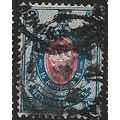Anuradhapura, Sri Lanka - Sunset at Tissawewa - postcard c.1960s
- Condition : Used
- Dispatch : 2 Days
- Brand : None
- ID# : 181679000
- Quantity : 1 item
- Views : 304
- Location : United Kingdom

- Seller : justthebook (+1704)
- Barcode : None
- Start : Sat 01 Jun 2019 16:17:30 (BST)
- Close : Run Until Sold
- Remain : Run Until Sold
More Listings from This Seller view all
Seller's Description
- Postcard
- Picture / Image: Sunset at Tissawewa, Anuradhapura [Sri Lanka]
- Publisher: Ceylon Tourist Board
- Postally used: no
- Stamp: n/a
- Postmark(s): n/a
- Sent to: n/a
- Notes / condition:
It is believed that King Pandukabhaya made it his capital in the 4th century BC, and that he also laid out the town and its suburbs according to a well-organized plan. He constructed a reservoir named Abhayavapi. He established shrines for yakkhas such as Kalawela and Cittaraja. He housed the Yaksini-Cetiya in the form of a mare within the royal precincts, and offerings were made to all these demi-gods every year. He chose the sites for the cemetery and for the place of execution, the Chapel of the Western Queen, the Pacchimarajini, the Vessavana Banyan Tree, the Palm of the Vyadhadeva, the Yona Quarter and the House of the Great Sacrifice. The slaves or Candalas were assigned their duties, and a village was set apart for them. They build dwellings for Niganthas, for wandering ascetics and for Ajivakas and Brahmanas. He established, the village boundaries. The tradition that King Pandukabhaya made Anuradhapura the capital city of Sri Lanka as early as the 4th century BC had been very important.
The administrative and sanitary arrangements made for the city and the shrines he provided indicate that over the years, the city developed according to an original master plan. His son, Mutasiva, succeeded to the throne. During his reign of sixty years, he maintained Anuradhapura as his capital and further laid out the Mahameghavana Garden which was to play an important role in the early history of Buddhism in Sri Lanka. It was in the period of his successor, his son Devanampiya Tissa, that Buddhism was first introduced to this island 236 years after the passing away of the Buddha. Emperor Ashoka of India was a contemporary of Devanampiya Tissa.
Mahinda was the son of Emperor Ashoka of India. Ashoka embraced Buddhism after he was inspired by a very small monk named Nigrodha. The king, who was in great misery after seeing the loss of life caused by his waging wars to expand his empire, was struck by the peaceful countenance of such a young monk. Meeting this young monk made a turning point in his life and he thereafter, renounced wars. He was determined to spread the message of peace, to neutralize the effects from the damages caused by him through his warfare. As a result, both his son and daughter were ordained as Buddha disciples, and became enlightened as Arahats. In his quest to spread the message of peace instead of war, he sent his son Mahinda, to the island of Lanka, which was also known as “Sinhalé”. According to Dipavamsa and Mahavamsa, Thera Mahinda came to Sri Lanka from India on the full moon day of the month of Poson (June) and met King Devanampiyatissa and the people, and preached the doctrine.
Historically this period is believed to extend from 250 to 210 BC. This is the point at which a kingship began and a civilization developed based on one of the most significant religions of South Asia, Buddhism.
A hermitage was made for many ascetics; eastward of that same cemetery, the ruler built a house for the Nigantha Jotiya. On the further side of Jotiya's house and on this side of the Gamani tank, he likewise built a monastery for wandering mendicant monks, and a dwelling for the Ajivakas and a residence for the Brahmans, and in this place and that he built a lying-in shelter and a hall for those recovering from sickness.[2]
Please ask if you need any other information and I will do the best I can to answer.
Image may be low res for illustrative purposes - if you need a higher definition image then please contact me and I may be able to send one. No cards have been trimmed (unless stated).
------------------------------------------------
Postage & Packing:
Postage and packing charge should be showing for your location (contact if not sure).
No additional charges for more than one postcard. You can buy as many postcards from me as you like and you will just pay the fee above once. Please wait for combined invoice. (If buying postcards with other things such as books, please contact or wait for invoice before paying).
Payment Methods:
UK - PayPal, Cheque (from UK bank) or postal order
Outside UK: PayPal ONLY (unless otherwise stated) please. NO non-UK currency checks or money orders (sorry).
NOTE: All postcards are sent in brand new stiffened envelopes which I have bought for the task. These are specially made to protect postcards and you may be able to re-use them. In addition there are other costs to sending so the above charge is not just for the stamp!
I will give a full refund if you are not fully satisfied with the postcard.
----------------------------------------------
Text from the free encyclopedia WIKIPEDIA may appear below to give a little background information (internal links may not work) :
*************
Anuradhapura (Sinhalese: අනුරාධපුරය ; Tamil: அனுராதபுரம்) is a major city in Sri Lanka. It is the capital city of North Central Province, Sri Lanka and the capital of Anuradhapura District. Anuradhapura is one of the ancient capitals of Sri Lanka, famous for its well-preserved ruins of ancient Sri Lankan civilization. It was the third capital of the Kingdom of Rajarata, following the kingdoms of Tambapanni and Upatissa Nuwara.
The city, now a UNESCO World Heritage Site, was the center of Theravada Buddhism for many centuries. The city lies 205 km (127 mi) north of the current capital Colombo in Sri Lanka's North Central Province, on the banks of the historic Malvathu Oya. It is one of the oldest continuously inhabited cities in the world and one of the eight World Heritage Sites of Sri Lanka.
It is believed that from the fourth century BC until the beginning of the 11th century AD it was the capital of the Sinhalese. During this period it remained one of the most stable and durable centers of political power and urban life in South Asia. The ancient city, considered sacred to the Buddhist world, is today surrounded by monasteries covering an area of over sixteen square miles (40 km²).
The layout of Anuradhapura as described in the Mahavamsa:
He laid out four suburbs as well as the Abhaya-tank, the common cemetery, the place of execution, and the chapel of the Queens of the West, the banyan-tree of Vessavana and the Palmyra-palm of the Demon of Maladies, the ground set apart for the Yonas and the house of the Great Sacrifice; all these he laid out near the west gate.[2]
Listing Information
| Listing Type | Gallery Listing |
| Listing ID# | 181679000 |
| Start Time | Sat 01 Jun 2019 16:17:30 (BST) |
| Close Time | Run Until Sold |
| Starting Bid | Fixed Price (no bidding) |
| Item Condition | Used |
| Bids | 0 |
| Views | 304 |
| Dispatch Time | 2 Days |
| Quantity | 1 |
| Location | United Kingdom |
| Auto Extend | No |




 for 1 item(s)
for 1 item(s)

















